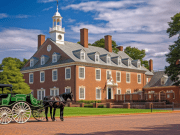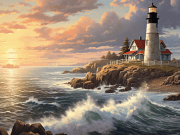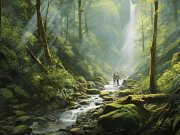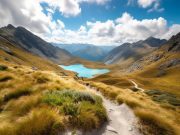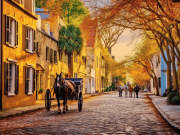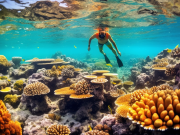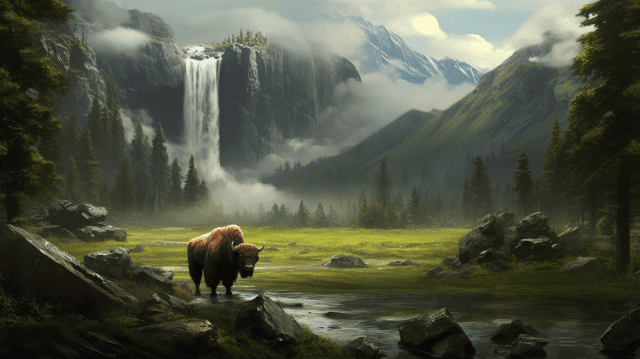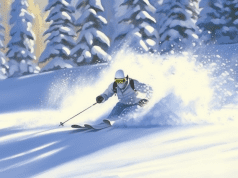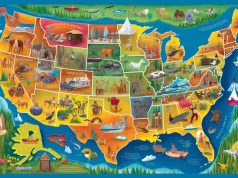You’re tired of the bright lights and constant chatter of city life. You crave a connection with nature, an escape from the hustle and bustle. Look no further than Yellowstone National Park, where you can discover some of the most awe-inspiring natural wonders in the world.
As soon as you step foot in Yellowstone, you’ll be surrounded by geothermal features like Old Faithful and Mammoth Hot Springs that will leave you speechless. And don’t forget about the stunning waterfalls that cascade down into crystal-clear pools below.
But it’s not just about sightseeing – Yellowstone is home to an abundance of wildlife, from grizzly bears to bison, that roam freely throughout the park. With hiking trails for all abilities and park ranger programs that offer insight into conservation efforts, there’s never a dull moment in this outdoor paradise.
So pack your bags and get ready for a journey beyond the bright lights – Yellowstone National Park awaits!
Key Takeaways
- Yellowstone National Park is the first national park in the world, spanning over 2.2 million acres and showcasing incredible ecological diversity.
- The park offers a range of activities such as hiking, camping, fishing, snowmobiling, and cross-country skiing, and is home to iconic wildlife and awe-inspiring waterfalls.
- Visitors should prioritize safety when exploring the park and be prepared with proper gear such as sturdy shoes, water, snacks, and bear spray while hiking.
- Other attractions in the surrounding areas include Grand Teton National Park, Cody, and Jackson Hole, which offer unique experiences such as rodeos, museums, winter sports, and culinary delights.
Overview of Yellowstone National Park
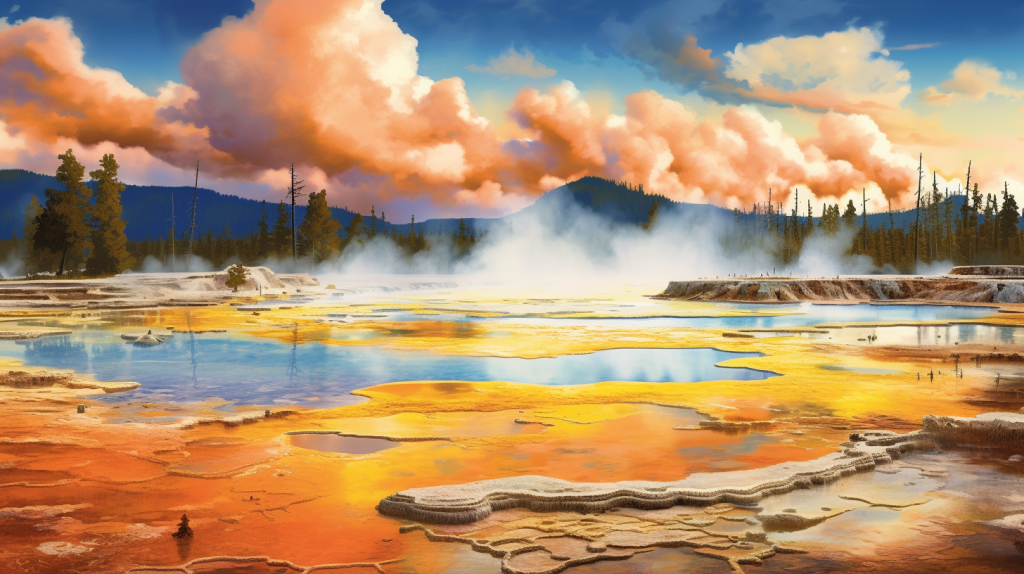
Get ready to explore the heart of the American West, where Yellowstone National Park is waiting for you with its breathtaking natural wonders.
This iconic park boasts a rich history and significance, as it was established in 1872 as the first national park in the world. It spans over 2.2 million acres of land across Wyoming, Montana, and Idaho, showcasing an incredible ecological diversity that ranges from high altitude lakes to dense forests and alpine meadows.
The park is home to over 67 species of mammals including grizzly bears, wolves, bison, and elk – truly a wildlife enthusiast’s paradise!
But Yellowstone is more than just a tourist attraction; it’s also a symbol of conservation efforts aimed at preserving unique ecosystems for future generations to enjoy.
With all this in mind, it’s easy to see why Yellowstone National Park continues to captivate visitors year after year. Now let’s delve into one of its most fascinating features: geothermal wonders like Old Faithful that draw millions each year!
Geothermal Features
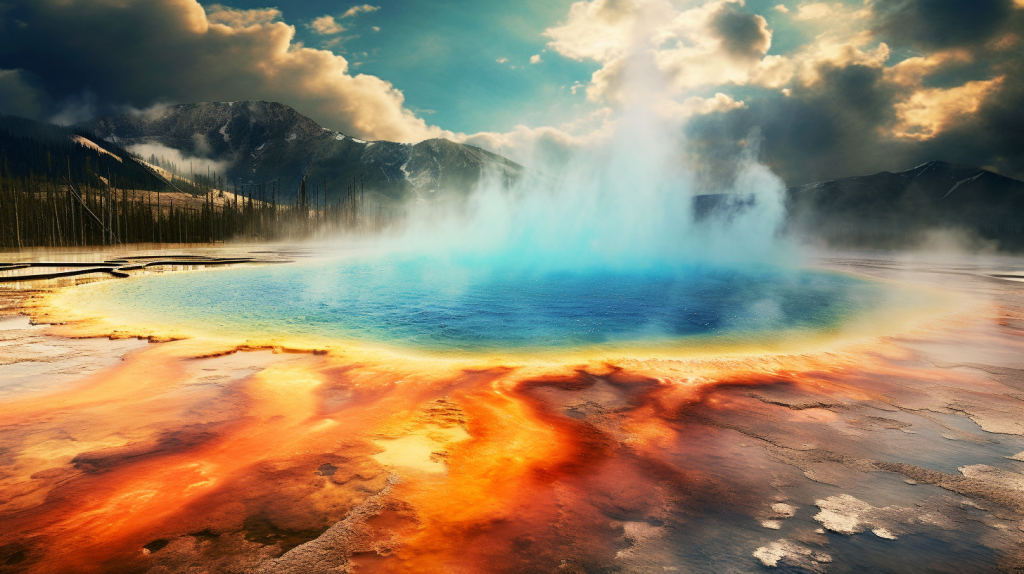
You’ll find some pretty cool hot springs and geysers around here. Yellowstone National Park is known for its geothermal features, and it’s easy to see why.
The park is home to over 10,000 thermal features, including the world-famous Old Faithful geyser. But there’s more to this area than just the well-known attractions. You can explore lesser-known sites like Norris Geyser Basin or Mammoth Hot Springs, which offer unique views of colorful hot springs and bubbling mud pots.
Geothermal energy is also harnessed in this area, with a few geothermal power plants located nearby. It’s amazing to think about how much energy lies beneath the surface of Yellowstone!
As you move on from the geothermal wonders, get ready for another natural spectacle: waterfalls cascading down rocky cliffs into deep pools below.
Waterfalls
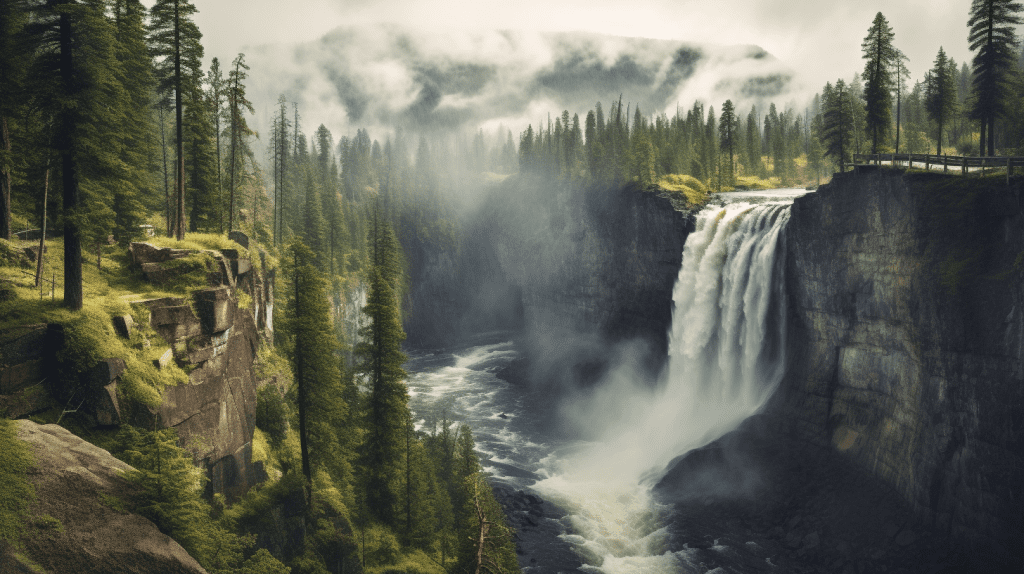
As you explore the area, don’t miss out on the stunning waterfalls, with their cascading streams and deep pools below. Yellowstone National Park boasts some of the most awe-inspiring waterfalls in the world.
One of the most photographed waterfalls is Upper Falls, which plunges down 109 feet into a canyon below. Another must-see waterfall is Lower Falls, which drops an astonishing 308 feet into the Grand Canyon of Yellowstone. These natural wonders offer breathtaking views and are a popular spot for photographers seeking to capture their beauty.
The best time to visit these falls is during spring or early summer when snowmelt causes them to swell with water. Take a dip in one of the cool pools or simply enjoy the misty spray as you stand in awe of nature’s power.
As you move on to discover more of what this park has to offer, keep your eyes peeled for some of its famous wildlife that call this place home…
Wildlife
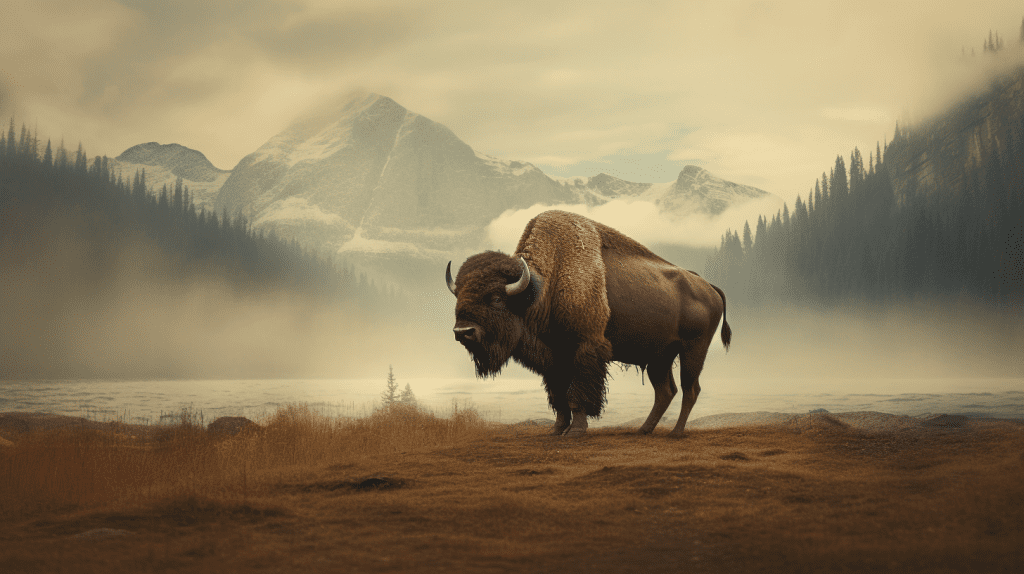
As you venture through Yellowstone National Park, keep your eyes peeled for the park’s most iconic wildlife. The grizzly and black bears are symbols of power and wilderness, with their massive size and sharp claws. Bison are another must-see animal in Yellowstone, with their shaggy coats and impressive horns that can weigh up to 50 pounds.
Finally, watch out for the elusive wolves. They were once on the brink of extinction but have made a remarkable comeback in the park. Seeing these animals in their natural habitat is truly an awe-inspiring experience.
Grizzly and Black Bears
Spotting grizzly and black bears in Yellowstone National Park is like finding a needle in a haystack, but when you do, it’s like hitting the jackpot. These majestic creatures are not only rare to come across, but they’re also incredibly fascinating to observe.
Grizzly bears are known for their aggressive behavior, especially when they feel threatened or if their cubs are involved. It’s important to understand their behavior and follow bear safety tips when exploring the park.
Black bears, on the other hand, tend to be more reclusive and shy away from humans unless provoked. But don’t let that fool you; they can still be dangerous if cornered or surprised.
Seeing these magnificent animals up close reminds us of the beauty and power of nature. As you continue your journey through Yellowstone National Park, keep an eye out for bison roaming freely in the meadows ahead – another incredible sight to behold!
Bison
Now that you’ve learned about Grizzly and Black Bears, it’s time to talk about another iconic animal in Yellowstone National Park – the bison.
Every year, these majestic creatures embark on a migration that takes them across the park in search of food and water. Watching them move across the landscape is truly a sight to behold.
As you observe their behavior, you’ll notice how they interact with each other and with their surroundings – rolling in the dust to keep cool, grazing on grasses, and occasionally locking horns during mating season.
It’s important to remember that while bison may seem docile, they are still wild animals and should be respected from a safe distance.
Now that we’ve explored the fascinating world of bison migration and behavior, let’s move on to another incredible predator: wolves.
Wolves
You’ll be amazed by how wolves traverse the vast wilderness of Yellowstone during their search for prey. Wolf behavior is fascinating to observe as they work together in packs to take down larger animals like elk.
These apex predators were once near extinction in the park due to hunting and habitat loss, but thanks to successful wolf reintroduction programs, visitors can now witness these majestic creatures in their natural habitat. It’s truly a thrilling experience to hear their haunting howls echoing through the valleys at night.
But remember, as much as we marvel at these incredible creatures, it’s important to keep a safe distance and respect their space.
As you prepare for your next adventure in Yellowstone National Park, don’t forget about all the amazing hiking trails waiting for you to explore.
Hiking Trails
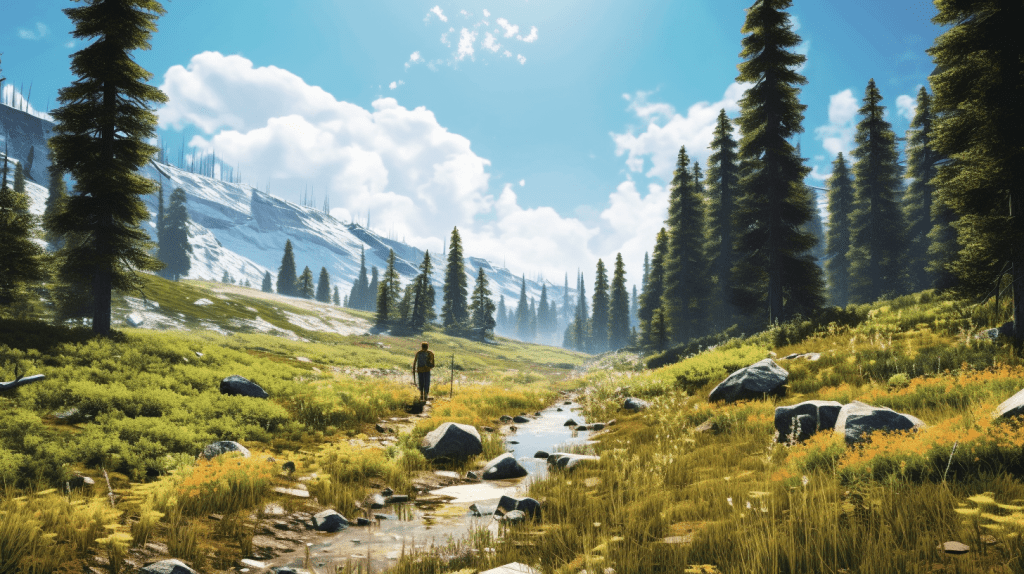
Don’t miss out on the incredible hiking trails in Yellowstone National Park – they’ll take you through breathtaking landscapes and leave you feeling accomplished and rejuvenated.
Here are some top hiking tips to ensure you have a safe and enjoyable experience: wear sturdy shoes, bring plenty of water and snacks, check the weather forecast beforehand, stay on designated trails, and carry bear spray.
As for the best hiking trails, there are so many options to choose from! You can hike around the geysers at Upper Geyser Basin or take in stunning views of Yellowstone Lake on the Elephant Back Trail. The Lamar Valley offers opportunities for wildlife sightings while the Mount Washburn Trail has panoramic views from its summit. And don’t forget about the iconic Grand Canyon of Yellowstone – its various hikes offer both beautiful scenery and challenging terrain.
With so much natural beauty to explore, it’s easy to understand why hiking is such a popular activity in Yellowstone National Park.
Now that you’ve worked up an appetite from all that hiking, let’s talk about your camping options…
Camping Options
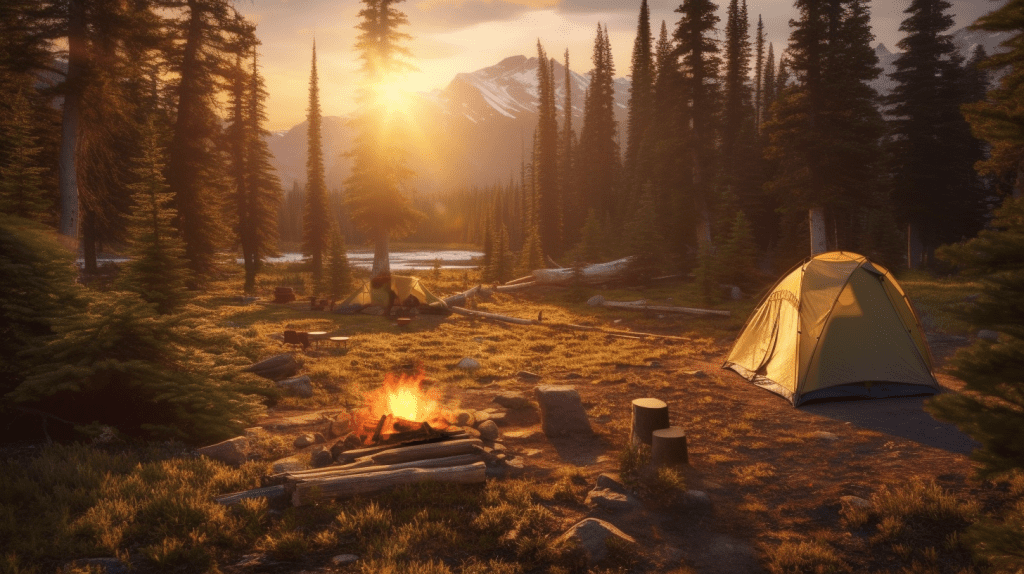
Camping in Yellowstone offers a unique opportunity to fully immerse yourself in the wilderness and experience the park’s natural beauty up close. With over 2,000 campsites spread throughout the park, there are plenty of options to choose from whether you prefer RV camping or roughing it in a tent.
Many of the campsite amenities include picnic tables, fire pits, and access to running water and restrooms. However, for those looking for a more remote experience, wilderness camping is also available with permits required. Imagine falling asleep under the stars with only the sounds of nature surrounding you!
Regardless of your preference, camping in Yellowstone is an incredible way to disconnect from technology and reconnect with nature. And if you’re an avid fisherman or woman, don’t miss out on some of the best fishing opportunities in North America – but we’ll get into that later!
Fishing

Are you ready to cast your line and reel in some of the best fish Yellowstone has to offer?
There are a variety of fish species that call these waters home, including cutthroat trout, rainbow trout, brown trout, and more.
Before you start fishing, make sure you know the regulations for each area as they can vary throughout the park.
Some of the best fishing spots include Yellowstone Lake, Lamar River, and Slough Creek.
Get ready for an unforgettable experience on the water!
Types of fish in Yellowstone
You’ll be amazed at the variety of fish you can catch in Yellowstone’s rivers and lakes, from rainbow trout to cutthroat trout to brown trout. The types of fish habitats in Yellowstone range from fast-moving streams to placid lakes, making it a haven for anglers of all levels.
Whether you prefer fly-fishing or spin-casting, there are plenty of fishing techniques that work well in these waters. As you cast your line, keep an eye out for native species like the Yellowstone cutthroat, which can only be found in this region.
In addition to trout, you may also catch Arctic grayling, mountain whitefish, and brook trout. With so many options available, it’s easy to see why fishing is one of the most popular activities in Yellowstone National Park.
Now that you know about the different types of fish you can find here, let’s talk about important fishing regulations that help preserve these natural wonders for generations to come.
Fishing regulations
It’s crucial to follow the fishing regulations in Yellowstone, so that we can preserve the diverse fish populations for future generations to enjoy. Conservation initiatives are in place to maintain the delicate balance of nature and prevent overfishing.
Make sure to check the current regulations before you head out on your fishing trip, as they may change seasonally or depending on the specific location in the park. Additionally, it’s important to use proper fishing gear recommendations, such as barbless hooks and artificial lures, to minimize harm to the fish population.
By following these guidelines, you can enjoy a fulfilling day of fishing while also contributing to the preservation efforts of this magnificent national park. As you plan your next adventure seeking out Yellowstone’s natural wonders beyond its bright lights, keep in mind some of the best fishing spots available throughout the park and what each one has to offer anglers like yourself!
Best fishing spots
Ready to reel in your next catch? Check out these top fishing spots in Yellowstone and cast your line like a pro.
Whether you’re a seasoned angler or just starting out, Yellowstone National Park offers some of the best fishing opportunities around. With over 2,000 miles of streams and rivers, there are endless places to explore.
Here are five of the best spots to try your hand at fly fishing techniques and snag that trophy trout:
1) The Lamar River – known for its cutthroat trout and picturesque scenery;
2) The Firehole River – famous for its geothermal features and rainbow trout;
3) The Yellowstone River – home to brown, rainbow, and cutthroat trout;
4) Slough Creek – a challenging spot with big rewards for those who can master it;
5) Soda Butte Creek – an intimate setting with plenty of brook and cutthroat trout.
To make the most of your experience, be sure to bring along the best fishing gear for Yellowstone including waders, boots, rods, reels, flies, and other tackle.
Winter may seem quiet, but don’t let that fool you! There’s still plenty to do from snowshoeing across pristine landscapes or skiing down slopes groomed just for you!
Winter Activities
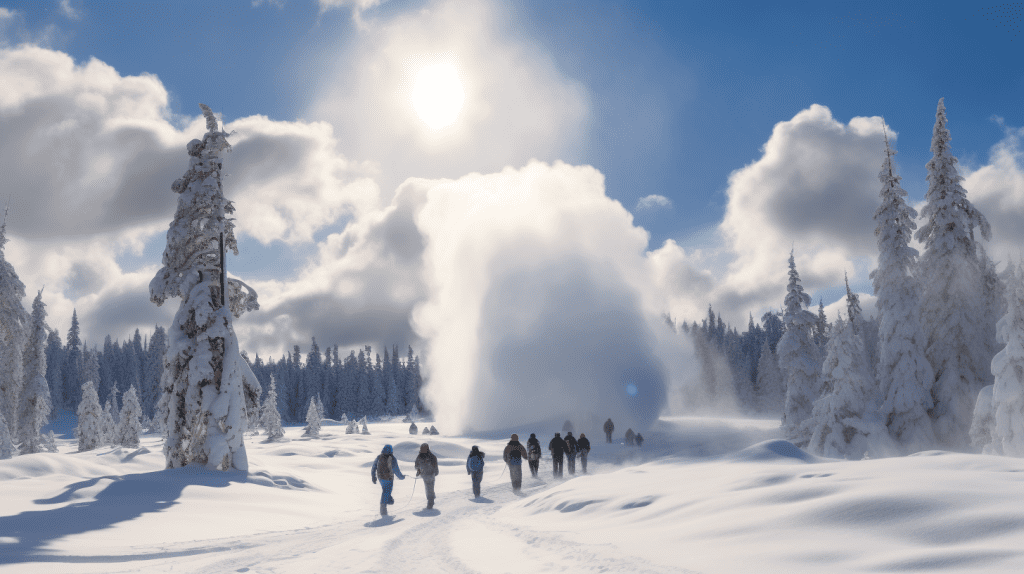
As the snow blankets Yellowstone National Park, you can still enjoy a variety of winter activities. Snowmobiling and cross-country skiing are both popular options. Yellowstone boasts over 150 miles of groomed trails, making it a winter wonderland for snow sports enthusiasts.
Imagine gliding through the forest on skis or zooming across snowy landscapes on a snowmobile – both experiences are unforgettable. After an exciting day outside, relax in one of the park’s hot springs to soothe your muscles and warm up from the cold.
But don’t forget to take a scenic drive through the park’s stunning winter landscape before heading back to your accommodations. It’s an experience that will leave you breathless.
Scenic Drives
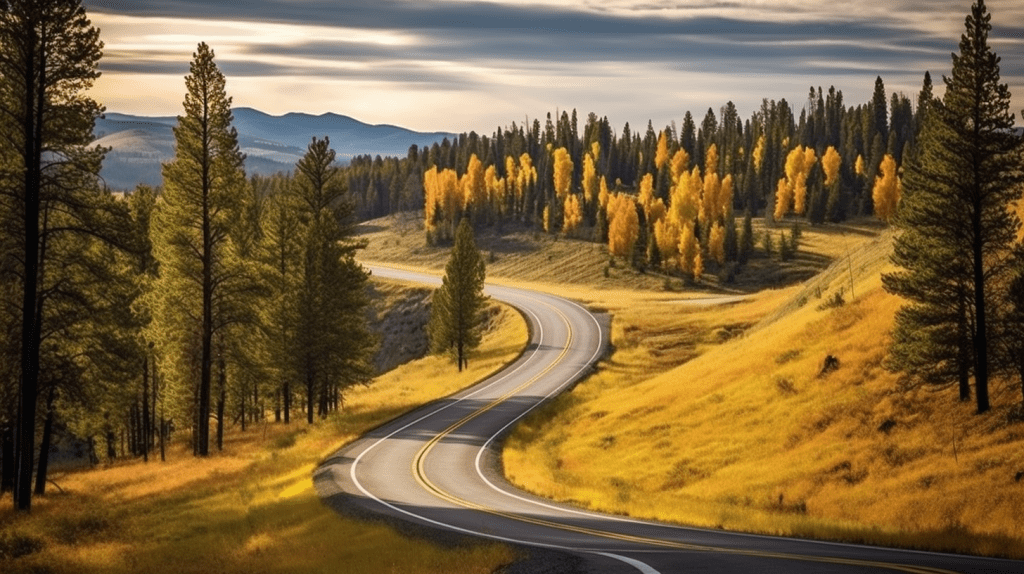
Take a drive through the breathtaking winter landscapes of Yellowstone and let yourself be mesmerized by the stunning sights that surround you. The park’s scenic drives offer an unparalleled experience, taking you through snow-laden forests, past frozen waterfalls, and around glistening lakes.
Be sure to stop at one of the many scenic overlooks along the way to fully appreciate the majestic beauty of this natural wonderland. And don’t forget to keep an eye out for hidden gems – lesser-known spots that can be just as spectacular as their more famous counterparts.
As you soak in the beauty around you, consider capturing these moments with your camera – next up, we’ll explore some tips for photographing Yellowstone’s winter wonderland.
Photography
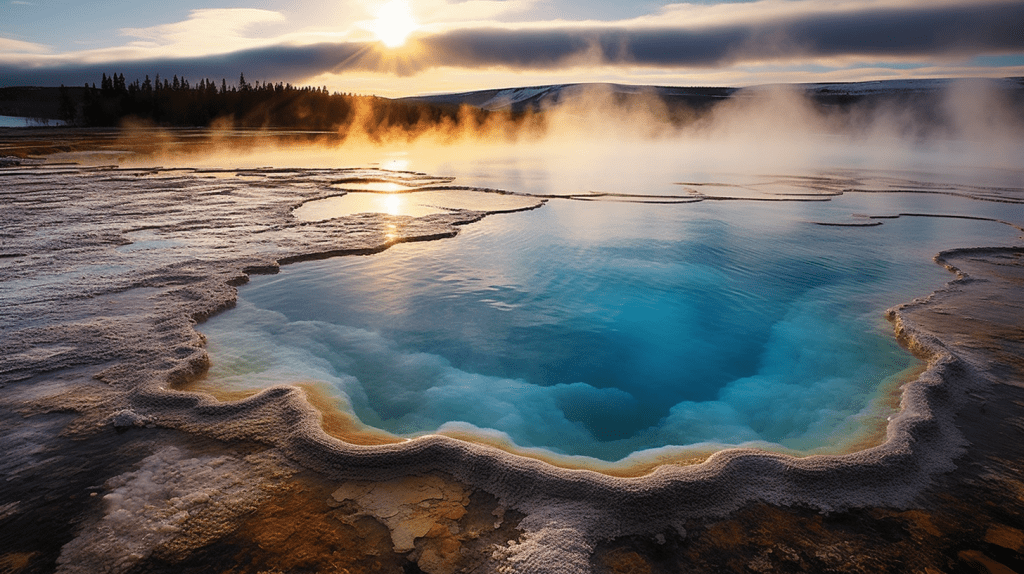
To truly capture the essence of this winter wonderland, you should bring along your camera and experiment with different angles and compositions. Yellowstone National Park is a photographer’s paradise, with breathtaking landscapes and wildlife portraits waiting to be captured.
From the steam rising off the geysers to the snow-capped mountains in the distance, every corner of this park offers a stunning photo opportunity. Take advantage of the early morning light or late afternoon golden hour for optimal lighting conditions.
Don’t be afraid to get up close and personal with the wildlife (from a safe distance, of course) for some truly unforgettable shots. And remember, patience is key when it comes to capturing that perfect shot. As Ansel Adams once said, “You don’t take a photograph, you make it.”
So go out there and make some magical memories! Now onto the next topic – park ranger programs offer even more opportunities for adventure in Yellowstone National Park.
Park Ranger Programs
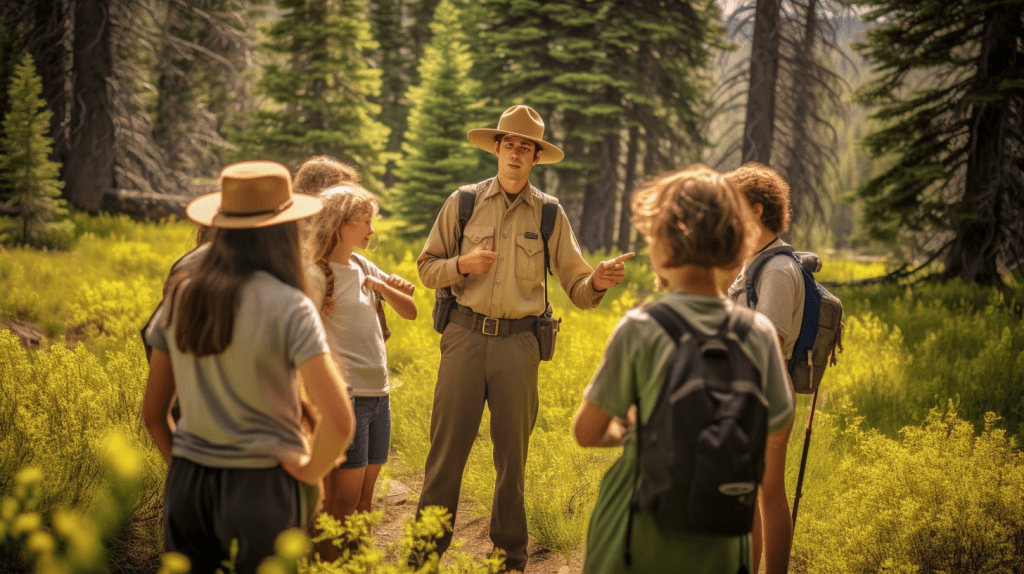
You’ll be delighted to know that park ranger programs in Yellowstone offer a plethora of exciting opportunities for you to explore the park’s natural wonders.
From ranger-led tours to the Junior Ranger program, there’s something for everyone.
You can join a guided hike through the backcountry and learn about the geology, wildlife, and history of Yellowstone.
Or, participate in a star gazing program and marvel at the night sky without light pollution.
The Junior Ranger program is perfect for families with children who want to learn more about conservation and ecology while completing fun activities.
These programs aren’t only informative but also engaging, making it easy for you to connect with nature on a deeper level.
And speaking of connecting with nature, did you know that Yellowstone has ongoing conservation efforts?
Let’s dive into how this iconic national park is working towards preserving its natural beauty.
Conservation Efforts
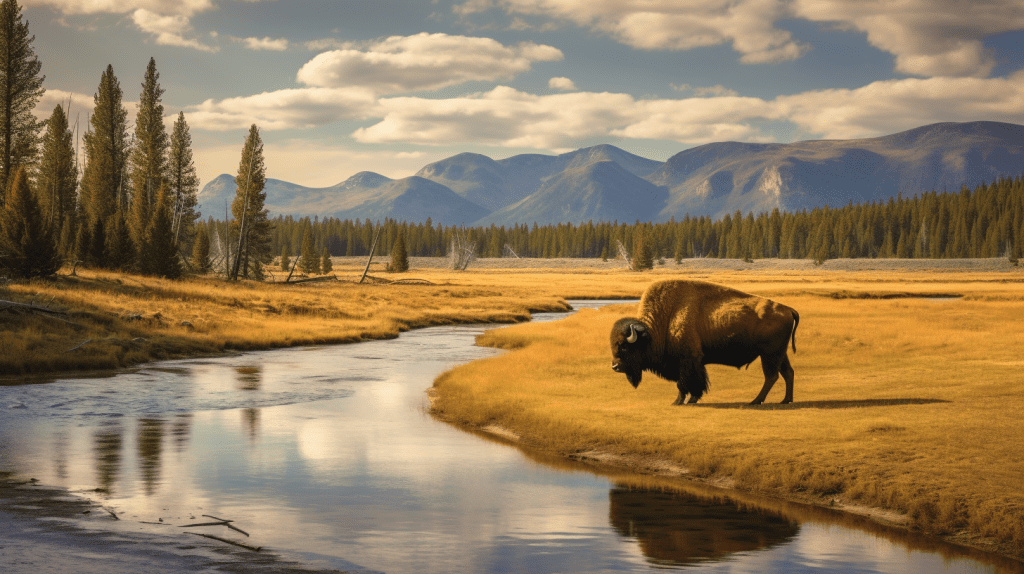
Now that you’ve learned about the exciting Park Ranger Programs available at Yellowstone National Park, let’s delve into the crucial Conservation Efforts taking place.
As a visitor to this magnificent park, it’s important to understand the impact of our actions on its wildlife and natural wonders.
Yellowstone has long been at the forefront of wildlife conservation and habitat restoration efforts, with initiatives aimed at protecting endangered species like grizzly bears and wolves. Through careful monitoring and management practices, these populations have been able to thrive once again.
Additionally, efforts are being made to restore damaged habitats and maintain a healthy ecosystem for all inhabitants. By supporting these conservation efforts during your visit, you can play an active role in preserving this awe-inspiring destination for future generations.
Speaking of future adventures, let’s now move on to explore some nearby attractions that will leave you breathless!
Nearby Attractions
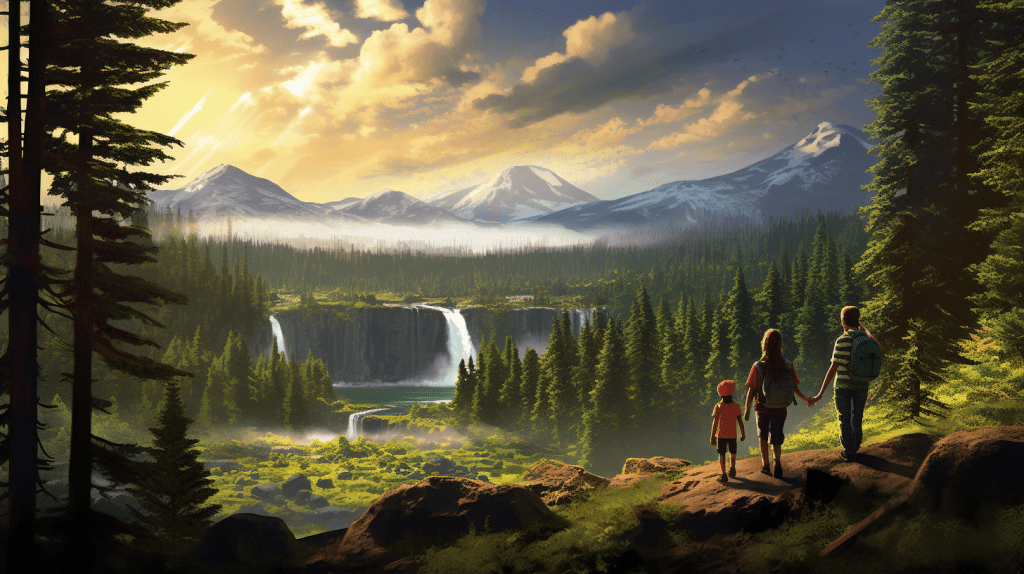
If you’re looking to continue your adventure beyond Yellowstone National Park, there are plenty of nearby attractions that will blow you away.
Just a short drive south is Grand Teton National Park, where you can marvel at the stunning mountain ranges and crystal-clear lakes.
Or head east to Cody, Wyoming, where you can experience the Wild West through rodeos and museums.
And don’t forget about Jackson Hole, a bustling town surrounded by breathtaking scenery and endless outdoor activities.
Get ready for an unforgettable journey filled with natural wonders and exciting destinations!
Grand Teton National Park
When you visit Grand Teton National Park, the towering peaks will make you feel like you’re standing in the midst of a grand cathedral, with the mountains as pillars and the sky as its dome.
The park offers endless opportunities for wildlife watching, from grizzly bears and bison to moose and elk.
If you’re up for a challenge, mountain climbing is a popular activity here.
With over 200 miles of trails, there’s something for every level of hiker – from easy strolls through wildflower meadows to steep ascents up rocky ridges.
But even if hiking isn’t your thing, simply taking in the stunning views from one of the many overlooks or scenic drives is worth the trip alone.
As you leave Grand Teton behind and make your way towards Cody, Wyoming, prepare yourself for even more natural wonders that await you in this stunning part of America.
Cody, Wyoming
Exploring Cody, Wyoming is a must for anyone seeking an authentic Wild West experience. The town boasts Rodeo Nights that are sure to get your heart racing with excitement and adrenaline.
Immerse yourself in the Western Charm of the community while indulging in local cuisine, such as bison burgers and homemade pies.
Don’t miss out on visiting the Buffalo Bill Center of the West, where you can delve into History and Art through their five museums dedicated to showcasing American Indian artifacts, firearms, art pieces, natural history specimens, and more.
As you leave Cody behind and continue your journey towards Yellowstone National Park, take a moment to reflect on how this town has left its mark on you.
Next stop: Jackson Hole!
Jackson Hole
You’ve explored the rugged terrain of Cody and now it’s time to head south to Jackson Hole.
This stunning valley is a hub for winter sports enthusiasts, boasting some of the best skiing in the country. With over 2,500 acres of skiable terrain, there’s something for everyone – from beginner slopes to challenging black diamonds.
But Jackson Hole isn’t just about skiing; it’s also home to a vibrant culinary scene that celebrates local ingredients and flavors. Whether you’re craving a hearty bison burger or fresh trout caught from nearby streams, you’ll find it all here.
As you plan your trip to Yellowstone National Park, don’t miss out on the opportunity to experience the thrill of skiing in Jackson Hole and savoring its delicious cuisine.
Planning Your Trip
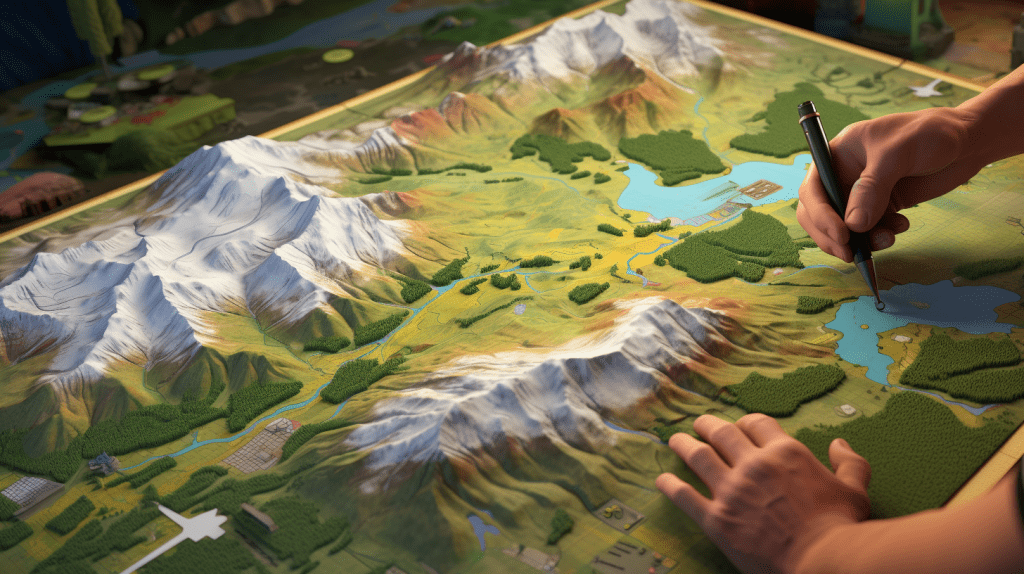
When planning your trip to Yellowstone National Park, there are a few key points to keep in mind.
Firstly, the best time to visit depends on what you want to see and do. If you’re looking for warmer weather and fewer crowds, consider visiting in the spring or fall.
Secondly, there are plenty of lodging options available within the park, from campsites to luxurious hotels. Be sure to book early as these options fill up quickly during peak season.
Lastly, while having a car is ideal for exploring the park at your own pace, there are also shuttle buses and tours available for those who prefer not to drive.
Best times to visit
Ideally, the best time to plan your visit to Yellowstone National Park is during the shoulder seasons of spring and fall. This is because the peak season can be incredibly crowded with tourists, making it difficult to fully appreciate the natural wonders around you.
Additionally, visiting during off-peak times means that you’ll have more flexibility in terms of lodging options and will likely encounter better weather conditions. Springtime offers beautiful wildflowers blooming and wildlife emerging from hibernation, while autumn showcases stunning changing leaves against a backdrop of geothermal features.
When considering when to visit Yellowstone, keep in mind that some roads may be closed due to snowfall in winter months.
As for lodging options, there are a variety of choices from camping to lodges within the park or nearby towns.
By choosing wisely on when to visit and where to stay, you’ll ensure an unforgettable experience at one of America’s most treasured national parks.
Lodging options
For a more comfortable stay, visitors can find various lodging options ranging from camping to cozy lodges located in or near the park. Yellowstone offers a unique experience with its rustic charm and modern amenities.
The lodges within the park offer stunning views, delicious dining options, and proximity to the natural wonders of Yellowstone. If you’re looking for budget-friendly options, camping is a great choice! There are 12 campgrounds throughout the park that offer serene settings and an opportunity to truly immerse yourself in nature.
Whether you choose to camp or stay in a lodge, both options offer their own unique experiences that will make your trip unforgettable. As you plan your trip, keep in mind that transportation is essential for exploring all that Yellowstone has to offer – from hiking trails to geysers – so be sure to check out the available options before arriving at the park.
Transportation
To fully explore all the attractions, you’ll need to consider the available transportation options while visiting Yellowstone. Luckily, there are several ways to get around the park.
If you prefer a more leisurely experience, take advantage of the park’s free shuttle service which runs between major areas and landmarks, including Old Faithful and Canyon Village.
For those who want more independence, renting a car or bringing your own vehicle is another option. Just be prepared for heavy traffic during peak season and limited parking at popular sites.
Biking is also an eco-friendly way to see the park up close and personal, with bike rentals available at various locations throughout Yellowstone.
Lastly, for a unique perspective on the park’s natural beauty, consider taking a guided horseback ride or even a scenic boat tour on Yellowstone Lake.
No matter how you choose to get around, remember that safety should always come first when exploring this stunning wilderness area.
Frequently Asked Questions
What are some of the lesser-known hiking trails in Yellowstone National Park?
Looking for adventure? Yellowstone’s off the beaten path trails lead to hidden waterfalls. Only 10% of visitors explore these areas, so you’ll find solitude and a sense of freedom. Get ready to discover something new!
Are there any guided tours available for visitors who want to explore the park’s geothermal features?
If you’re interested in seeing Yellowstone’s geothermal wonders, there are plenty of guided tours available. These tours offer knowledgeable guides who will take you to all the best spots and provide fascinating information about the park’s unique features.
Can visitors bring their own fishing gear or do they need to rent it from the park?
You can bring your own fishing gear to Yellowstone, but it must comply with the park’s regulations. Renting is also an option and can be convenient. Enjoy the freedom of exploring the park’s waters!
What is the best time of year to visit Yellowstone National Park for wildlife sightings?
The best time for wildlife sightings in Yellowstone is early summer. Look for bears and bison near the roads, and take advantage of the park’s camping options or stay at one of the many lodges.
Are there any restrictions on photography in the park, such as drones or flash photography?
So you’re thinking of bringing a drone to Yellowstone? Well, sorry to burst your bubble, but there are strict drone regulations in the park. And as for flash photography, there are guidelines to protect wildlife and preserve the natural beauty of the park.
Conclusion
As you wrap up your trip to Yellowstone National Park, you can’t help but feel a sense of awe and gratitude. You’ve marveled at the geothermal features that make this park so unique – from the boiling mud pots to the iconic Old Faithful geyser.
You’ve hiked through breathtaking landscapes, taking in views of towering waterfalls and sweeping mountain ranges. And let’s not forget about the wildlife – watching bison roam freely and spotting grizzly bears in their natural habitat was a true highlight.
But what really struck you was learning about the conservation efforts underway in this incredible place. From reducing waste to preserving delicate ecosystems, it’s clear that those who call Yellowstone home are committed to protecting it for generations to come.
It’s easy to get lost in the beauty of nature here, but it’s important to remember how fragile these wonders truly are – and how crucial it is that we work together to preserve them.
So as you pack up your car and say goodbye to Yellowstone, take a moment to appreciate all that you’ve experienced. This national treasure may be anachronistic in some ways – an oasis of natural wonder amidst our increasingly urbanized world – but its importance has only grown over time.
With its vibrant wildlife, stunning landscapes, and rich history, there truly is no other place like it on earth.

